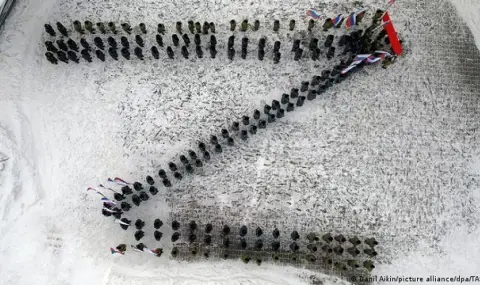The Telegram channel "Ribar" stated on April 25 that he had opened the "Ribar Media School" in the Balkans" and that a team of "Ribar" has spent the past week in Serbia and on the territory of Republika Srpska (the Serbian political entity in Bosnia and Herzegovina).
This is stated in the daily analysis of the Institute for the Study of War (ISW).
"Fisherman" claims that his team trained students, journalists, politicians and academics how to create and manage Telegram channels, organize these channels into networks, distribute "properly" content and to combat "disinformation".
"Fisherman" claims that founder Mikhail Zvinchuk lectured, accepted 10 "bright and promising" project and has reached agreements to hold regular personal master classes with the authors of unspecified Russian Telegram channels.
Before "Fisherman" conducted a master class on the importance of Telegram and other social media for press managers and communications officers at the Russian state defense conglomerate "Rostech" possibly in an attempt to normalize the war without involving the Kremlin.
The public expansion of the activity of "Ribar" to international media influence operations is remarkable, especially at a time when the Kremlin is seeking to expand its influence over the Russian information space and co-opt more Russian military bloggers, as it did with "Ribar".
Secretary of the Russian Security Council Nikolai Patrushev met with Republika Srpska President Milorad Dodik in St. Petersburg on April 23 and discussed strengthening interstate cooperation and the situation in the Balkans and Europe.
Russian forces have unmanned aerial vehicles adapted to be more resilient to Ukrainian electronic warfare (EW) capabilities in critical sectors of the frontline, possibly in an attempt to use new technological capabilities to take advantage of the limited period before the arrival of American security assistance in Ukraine.
On April 15, "Ukrainian Pravda" reported that its sources at the Ukrainian General Staff stated that the number of Russian drones in the "hot" sectors of the front line has "doubled at least" in the last three months.
Ukrainian General Staff sources report that Russian forces are using modernized UAVs that operate at frequencies between 700 and 1000 MHz, which are difficult to be jammed by Ukrainian radio-electronic defense systems, as Ukrainian radio-electronic defense systems are primarily designed to jam Russian drones operating at frequencies around 900 MHz.
U.S. officials are concerned that the latest package of U.S. military aid to Ukraine may not be enough for Ukraine to regain all of its territory.
Moreover, US military aid is only a fraction of what Ukraine needs right now; but Ukraine itself is working to address other war-fighting requirements - most notably human resource challenges and the expansion of its Defense Industrial Base (DIB).
On April 25, "Politico" reported that three US officials believe that recent US aid may not be enough for Ukraine to restore its territorial integrity due to changes in the battlefield situation over the past few months.
One US official reportedly said the "immediate target" of the US aid package is to stem Ukrainian losses and help Ukraine "regain momentum" on the battlefield, after which the goal will be to help Ukraine regain its territory.
The ISW has previously assessed that Ukraine's ability to defend itself against Russian offensive operations and possibly challenge the initiative of the entire theater of operations is highly dependent on both the provision of US military assistance and Ukraine's efforts to restore and reconstruct existing and create new parts.
US military aid is currently on its way to Ukraine, and it has recently taken steps to address its personnel issues.
Ukraine is also dramatically expanding its defense industrial capacity to develop its ability over time to meet its military needs with significantly reduced foreign military aid.
The Russian offensive operations west of Avdeevka are intended to take advantage of opportunities for tactical success, while the Russian offensive operation to capture Chasiv Yar offers Russian forces the most immediate prospects for operationally significant progress.
Russian forces in the Avdeevka area remain about 30 km from their reported operational objective of Pokrovsk and about 17 km from relatively large villages east of Pokrovsk.
Even if Russian tactical successes cause Ukrainian forces to withdraw to positions further west, it is unlikely that the current Russian successes northwest of Avdeyevka will translate into operationally meaningful advances in the near future.
Russian pressure on Chasiv Yar is more significant. As of March 2024, Russian forces currently stationed on the eastern outskirts of Chasiv Yar are stepping up their efforts to capture the city.
Offensive efforts to capture Chasiv Yar offer Russian forces the most immediate prospects for operationally significant progress, as capturing the city will likely allow Russian forces to launch subsequent offensive operations against towns that form a significant Ukrainian defensive belt in Donetsk area.
Russian forces pose a real threat to taking Chasiv Yar, although they may not be able to do so quickly.
